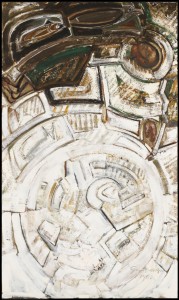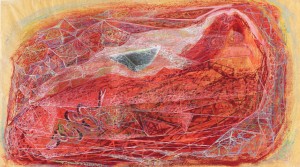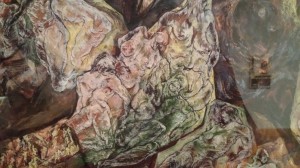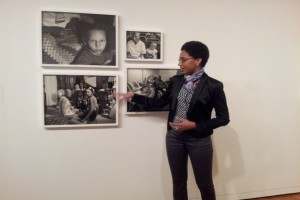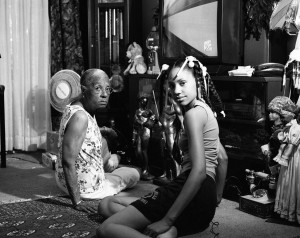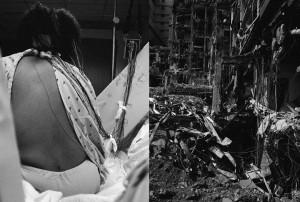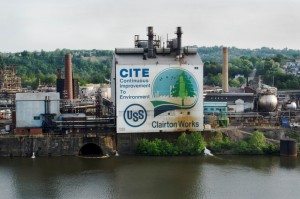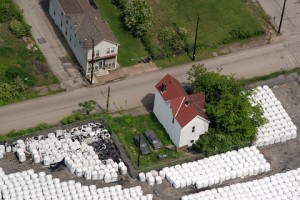Art in Seattle from my monthly Leschi column: “Modernism in the Pacific Northwest” and ” La Toya Ruby Frazier: Born by a River,”
PART 1
“Modernism in the Pacific Northwest: the Mythic and the Mystical” Seattle Art Museum” June 19 – Sept 7, 2014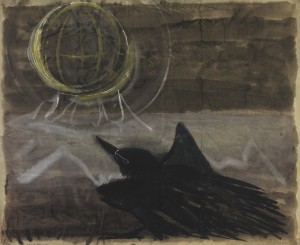
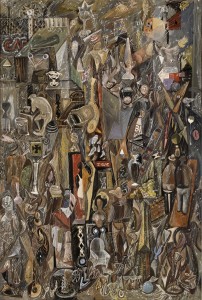
For almost two hours, in a closed café at the Seattle Art Museum, Patricia Junker, the Ann M. Barwick Curator of American Art, talked to me about her upcoming exhibition “Modernism in the Pacific Northwest.” Both lucid and animated, she was so riveting that I didn’t notice the time pass without even a sip of water!
It was a rare opportunity to learn about cutting edge thinking in an area that really fascinates me: how history gets written or, to put it another way, who ends up being important and why. In honor of the first exhibition of the Marshall Hatch Collection at the Seattle Art Museum, Patricia Junker has combed through archives and answered those questions for the famous artists of the Northwest modern era, Mark Tobey, Morris Graves, Kenneth Callahan, and Guy Anderson.
Modernism has been defined as art based on French Cubism and its descendants. But in the case of these artists, it refers to something entirely different. During the late 1930s and early 1940s, precisely during World War II, these four artists, disgusted by the violence of the war and fascism in Europe, met regularly to discuss alternatives to European art as the basis for their work.
The Northwest artists found a common sense of humanity in the art and philosophy of contemporary Native Americans as well as that of Asia. They deeply explored both mythology and mysticism. Unlike European artists who turned to African art purely for its forms, or East Coast artists, whose exposure to Native art was as historical cultures, these artists immersed themselves in the spectacular Northwest native art collections in Seattle and were invited to view long house performances by the Swinomish, a Coast Salish tribe on Skagit Bay. The artists could even buy native art at The Olde Curiosity Shop on the Seattle waterfront, which supported native artists by selling their work (it still does).
Likewise, the Seattle Art Museum provided an extensive collection of Asian art, thanks to its founding director, Dr. Richard Fuller. Dr. Fuller’s dual commitment to Asian art and contemporary Northwest art led him to support Kenneth Callahan as his employee at the museum, as well as to provide Mark Tobey with a monthly stipend. He also regularly bought their art and that of many other Northwest artists. The contemporary collection he amassed was carefully supplemented by Seattle Art Museum Board Member Marshall Hatch after Fuller’s death in 1976.
What we have seen so far on exhibit though, is what Patricia Junker described as “not even the tip of the iceberg.” Popular writing about these artists has often followed a 1953 Life magazine article suggesting that rain and mist in the Northwest were their main sources of inspiration. Patricia Junker states that it was careful study, discussion and thoughtful analysis of Asian and native art specifically during World War II that is the crucible for their art. It was a time, not a place, that formed them. While the artists later went their distinctly separate ways, as we will see in the exhibition, this shared exploration permanently shaped their art.
But the second part of the story that Patricia Junker tells shines a bright light on the crucial role of women in shaping these artists’ careers. She cites five women starting with Kenneth Callahan’s wife Margaret, who was a catalyst for the artists to make art with a social conscience. Also crucial were Dorothy Miller, Curator at the Museum of Modern Art, Marion Willard, pioneering New York City art dealer; Elizabeth Bayley Willis, energetic curator and promoter of Mark Tobey in particular; and Zoe Dusanne, Seattle contemporary art dealer. The intelligence and perseverance of these curators and dealers successfully contradicted the dogmatic and immensely influential art critic Clement Greenberg, who repeatedly dismissed Mark Tobey and Morris Graves as minor disciples of Paul Klee! Now, with this exhibition we can see their complexity for ourselves.
Postscript: On seeing the exhibition, it was a revelation. I felt I knew the work of these artists, but this exhibition gave me an entirely new perspective.
Graves as seen in this intense, highly saturated bird image suggests interior and exterior reality, spirit and matter. In the next gallery dark images of despair were equally new to me as part of Graves’ emotional spectrum.
The complexity of Kenneth Callahan in his intricate interweaving of figures and shape suggested his knowledge of art history as well as his turbulent responses to the contemporary world. You can’t see the figures very well in this detail of the painting Rocks and People, but they create an intense expression of struggle and suffering. The idea of embedding the human body into the rocks is itself a powerful idea.
PART 2
“La Toya Ruby Frazier: Born by a River” December 13, 2013 – June 22, 2014
We all know about Andrew Carnegie’s steel mills and libraries for the “ambitious and industrious” public. What we have not heard about are the struggles of African Americans who worked at his mills. The dynamic photographer La Toya Ruby Frazier tells that story in her exhibition at the Seattle Art Museum. 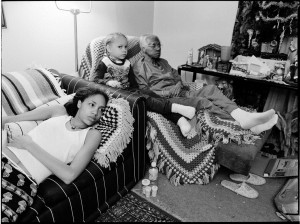
La Toya Ruby Frazier grew up in what is known as the “Bottoms” of the Monongahela River in Braddock, Pennsylvania, nine miles outside of Pittsburgh. Braddock is the site of the first and the last Andrew Carnegie steel mill, Edgar Thomson Works. Generations of Frazier’s family have worked in that mill since the turn of the last century. As African Americans they were paid less and, over the decades, had many job related injuries and much illness. But they could not afford to move away from the toxic environment near the plant.
La Toya‘s grandmother, who raised her, was born in the 1940s when the town was prosperous, her mother in the 1960s, and she herself in the 1980s, the era of Reaganomics, when the war on drugs decimated her family.
The artist describes a childhood memory: “One night the river flooded. Crossing through miles of man-made manufactures, contaminated soils and debris, it filled the basement and soaked the floors of my childhood home on Washington Avenue . . . if 70 percent of the world is covered with water and more than 50 percent of our bodies is comprised of water, then the properties found in waters that surround our artificial environments reflect not only a physical condition, but a spiritual condition in which we exist.” In other words, the toxins in the water are part of the fiber of her body and those of her family. They contaminate not only their bodies, but also their spirits.
Frazier has just received the third Gwendolyn Knight and Jacob Lawrence prize, awarded biennially for an early career black artist: she received a cash prize and this exhibition endowed by the Foundation. Seattle Art Museum’s Sandra Jackson-Dumont curated this selection of photographs that opened in December. As we approach the Gwendolyn Knight and Jacob Lawrence gallery on the third floor, we first see a long corridor with selections from Frazier’s personal life experience. All of these black and white photographs were taken in or near her grandmother’s home, where Frazier was raised about a block from the steel mill.
Here, as a child, the artist experienced warm love and a special world that her grandmother created inside this house surrounded by toxins, illness, and deterioration. It is that world of love that La Toya celebrates. In the intimate photographs we see her grandmother cradle two of her extraordinary collection of dolls, her hands with a cigarette and a wedding ring. In one image, the artist, now a young adult, sits on the floor with her grandmother, with a recreated hairdo like those her grandmother lovingly wove for her as a child.
Her mother sits in a hospital gown with her exposed back to us, many wires attached. The other half of the frame shows the destruction of the community hospital in Braddock. The wires of her mother’s body and the dangling wires of the hospital echo one another.
One color photograph ends the corridor, a timely (as we think of the massive leakage into the water of Charleston, West Virginia this spring) image of industrial degradation along the Monongahela River with a big sign that says “Clairton Works, Continues Improvement to the Environment.”
As we enter the Jacob Lawrence and Gwendolyn Knight Gallery, large format color photographs taken from a helicopter give us the context for the issues that Frazier wants us to understand. We see the blue Edgar Thomson Steel Mill, still operating, and the lines of railroad cars that carry the steel. Nearby are just a few houses and trees. That is Frazier’s neighborhood. But Frazier’s focus is the empty hole left by the destruction of the community hospital and the home of Isaac Bunn surrounded by rolls of white rubber dumped all around it.
Isaac Bunn came to the opening and I talked to him. He wanted to buy more land around his house, but his paperwork was lost, and the owners invited a company to dump rubber wrapped in white plastic there. They look like a snowstorm gone wrong. Inside the house are four generations of Bunn’s family.
Bunn is now director of the Inclusion Project. As Braddock has acquired the status of poster child for redevelopment of rust belt cities, partly because of its flamboyant mayor, these long time working class residents feel left out of the process. Bunn wants them to be part of the conversation.
So far, as documented in the photographs, we mainly see the march of the usual condos. In addition, according to both Bunn and Frazier, “social practice” artists from outside the community are creating projects that have no real connection to its history, especially its African American working class history,
A riveting speaker and personality, Frazier interspersed her narrative of work, illness (the most common are cancer and lupus, from which the artist herself suffers), toxins, poverty, racism, community and love, with frequent references to art history and major artists who have been important to her work, ranging from Louis Hines and Jacob Riis, pioneering social documentary photographers, to Laszlo Moholy-Nagy, the avant- garde photographer.
She commented on New Deal photography as “top down”, asking us how many knew the name of the woman in the famous “migrant mother” photograph by Dorothea Lange. She has studied with Carrie Mae Weems and other contemporary socially engaged photographers. The intersection of economic and political forces that create and destroy life, community, and environment come across clearly in her art work. She is precisely aware of how she fits into the larger context of social documentary as well as photography in general.
Her work perfectly balances aesthetics and content.
On the digital display in the gallery, Frazier’s sardonic performance protests Levi ads set in Braddock with the slogan “Go Forth”. “Go Forth where?” she asks, if you have no money, and you are dying of cancer and the only hospital in the community has been closed. The digital display, a pioneering project itself, includes Frazier’s work shown recently at the Brooklyn Museum and elsewhere. For another analysis of her work read this blog.
La Toya Ruby Frazier’s highly focused mission to tell the story of working class African Americans counters the narrative constructed by outsiders who have no idea of the life that continues in this ravaged place. Her work belongs to the people who can’t afford to leave. She wants them not just to be remembered, but honored.
This entry was posted on September 23, 2014 and is filed under Art and Activism, Art and Ecology, Art and Politics Now, Contemporary Art, Uncategorized.

